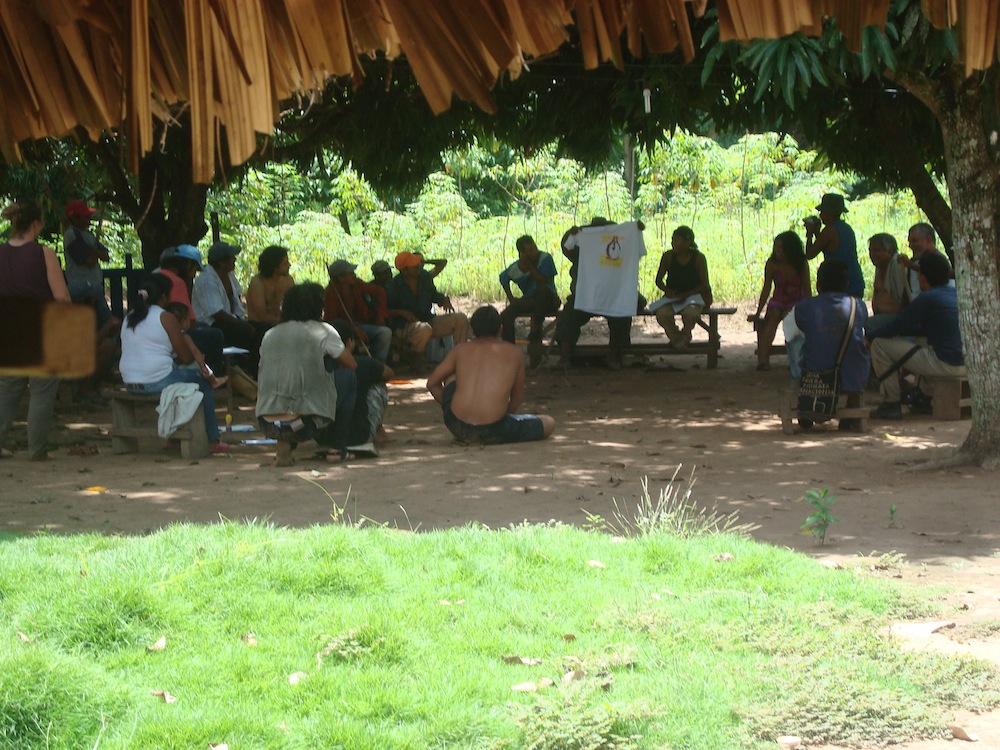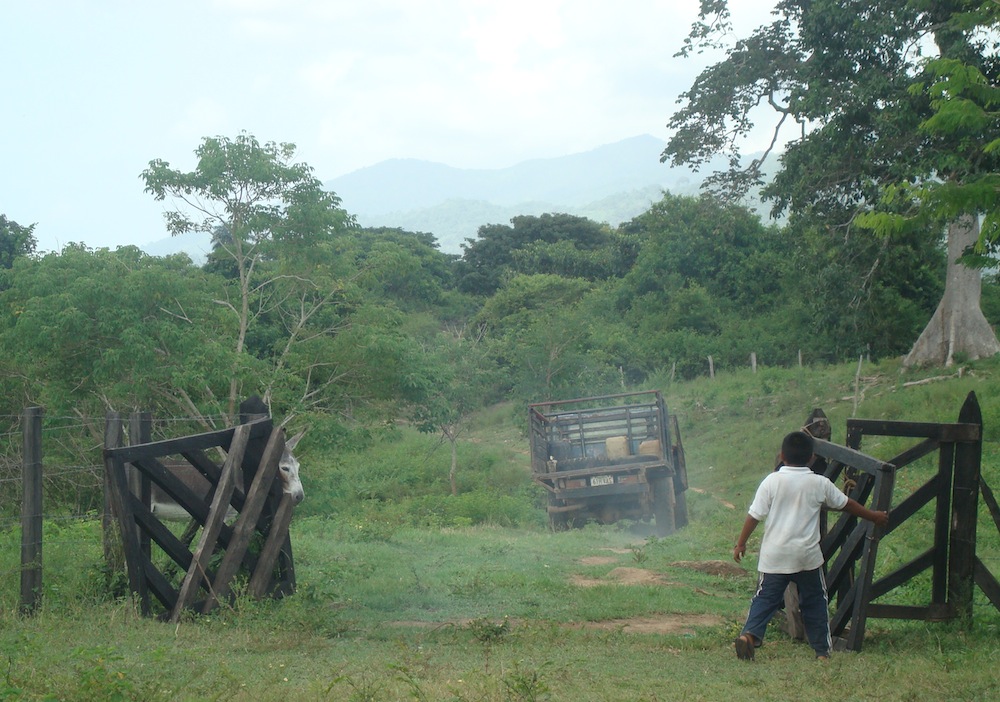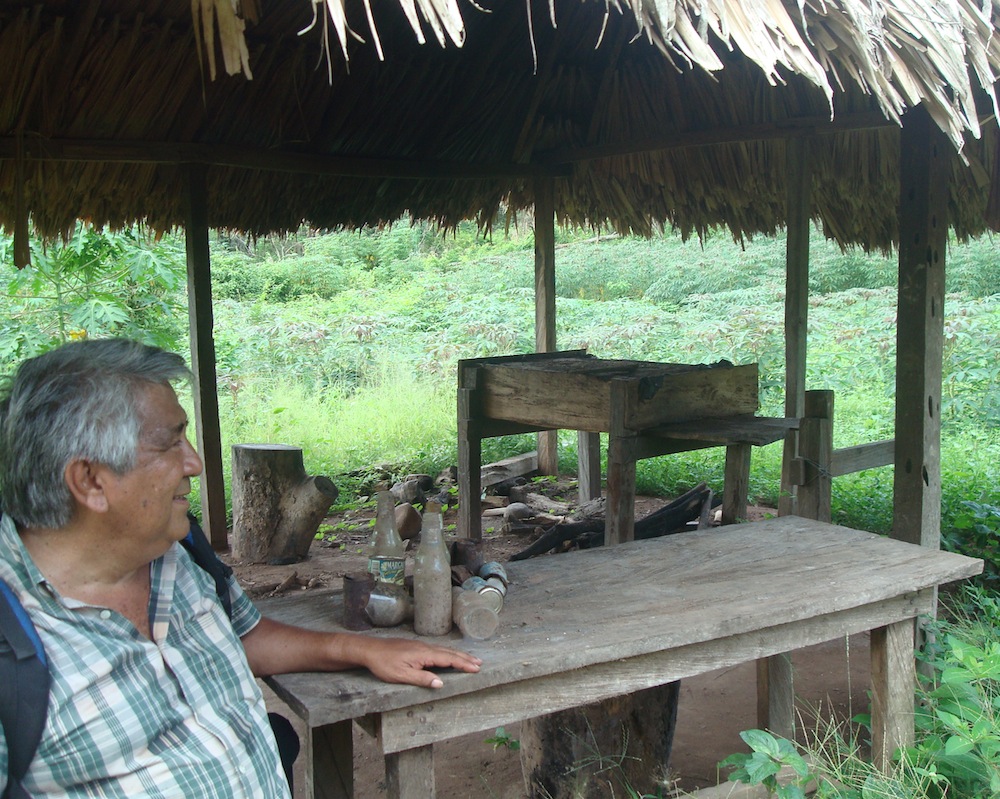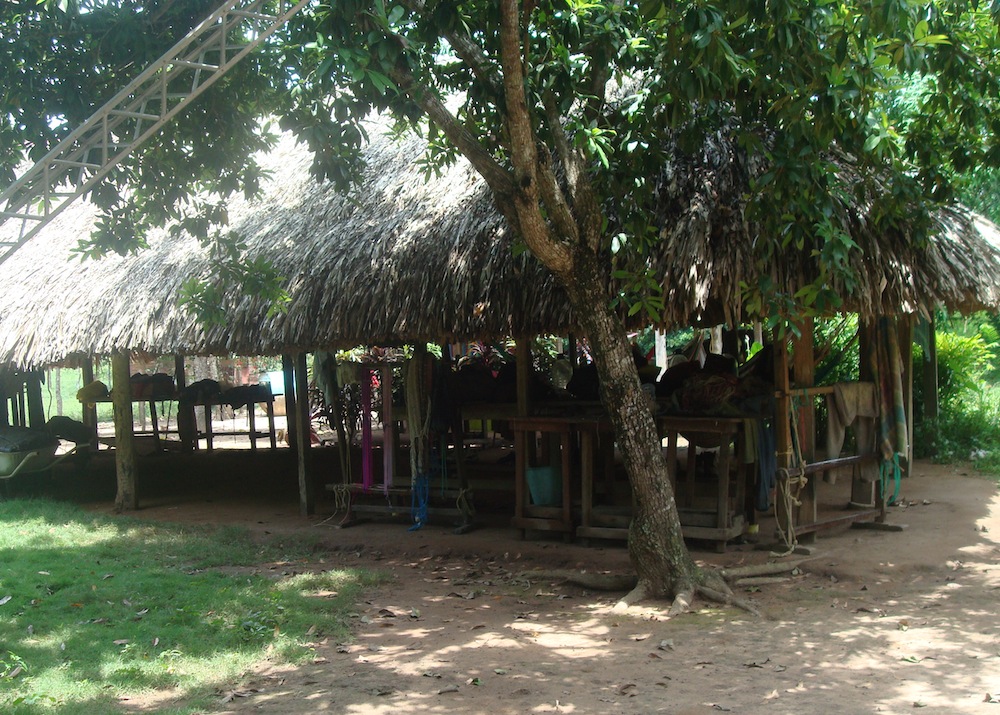
The Wayuu people of the Andes are strengthening their cultural institutions, in an effort to fight mining interests pushing them from their lands
What instantly captures the hearts of those brave enough to venture into the Venezuelan National Reserve in the Andes mountains is the untamed beauty of the vegetation, the crystal waters of the rivers and the sumptuous cascades. Yet scraping just below the surface of this idyllic scenario are the harrowing stories of the Wayúu, an indigenous community fighting to exist.
After a five hour journey from the oil city of Maracaibo, and a two-hour ride over a nonexistent road in a 1960’s Jeep with a broken radiator, we finally arrive at the village of Wayuuma’na. Professor Lusbi Portillo and I are met by Mama Rosario, the matriarch of the village, or El Padrino, as her sons Pedro and Diego call her. Though she has just two sons, everyone calls her mama, as she organizes daily life in the village, and in particular is responsible for feeding the community. The professor inquires after her sons.
“They are at the council, but they will be back shortly. They know that today there is an assembly,” she says.
After drinking a glass of chirriche, a traditional Wayúu drink made of mango and rice, Professor Portillo suggests we rest, as we have a long day ahead of us. Mama Rosario lends me a hammock, and helps me to hook it up in the shack where visitors stay. My nap doesn’t last long, as I am abruptly woken up by Domingo, a kid living nearby.
“Are you one of teachers of the new school?” he asks with excitement.
“No I am just visiting.”
“Well, whatever you have come to see, you have to see the Socuy!”
The Socuy River carries 60% of drinkable water to the region. For peasants and indigenous groups living here in the Sierra de Perija, it’s a synonym for life.
Domingo spots a black rock in the distance. He takes it and passes it on to me, revealing its crumbly consistency.
“What is it?” I ask.
“It’s coal!” he exclaims. “You see, it’s for this rock that the whites hate us. They want to take away our homes and everything we’ve built.”
He sighs. “I just wish there was no coal here.”
Despite his 11 years of age and rudimentary Spanish, Domingo already understands the destiny of those who live on the wrong side of the global tracks.
In 2007, President Hugo Chavez stood up in front of the nation and declared: “If there is no environmentally safe way of extracting coal from the Socuy, then the coal stays below the ground.”
Four years later, in June 2011, Francisco Arias Cardenas, the president of Chavez’s PSUV party and a candidate for governor of Zulia state, unveiled plans to open that very mine, plus two more.
The coal extracted from these three mines would fuel a new carboelectric plant, and help cope with the severe electricity crisis. Yet the opening of these mines, besides inflicting irreversible damage to the environment, as acknowledged by the president himself, would displace six indigenous communities, including the Wayúu. This situation, akin to many others in the Americas, is the result of the extractionist practices upon which the oil economy of Venezuela heavily depends.
Despite the introduction of a revolutionary constitution, with an entire chapter (the 7th) dedicated to indigenous rights, the inhabitants of Wayuuma’ana and surrounding communities find themselves once again at a crossroads. Sell out to the mining companies — agree to be displaced and impoverished, to sell the future of their kids — or be buried alive by the rubble, thick gasoline clout and general devastation that open-air coal mining brings.
Finding neither of these options appealing, the Wayúus have created their own third option: resist.
The agenda for the day of our arrival comprised two key topics: the opening of a new school, Yalayalanama, in Wayúu language “the strong, those who stayed,” and a museum of Wayúu history. Professor Portillo takes a seat on the stool below the peaceful shade of the sumptuous mango trees. Soon people from Wayuuma’ana and surrounding parcels begin to assemble.
After debating the practical issues of the development of these projects, the professor raises his voice to reiterate what at this stage was clear to all the attendees:
“This school is to stop the coal. This museum is to stop the coal.”
The strengthening of Wayúu culture has become a key tool in the community’s arsenal of resistance. The construction of cultural institutions on the lands where the mines are to be opened is a very practical way of slowing inspections and planned mining operations. And the regeneration of ancestral knowledge and of a Wayúu collective identity is the only way to ensure future generations will carry on the struggle for their lands. As professor Jose Quintero-Weir, cultural consultant of Maikiralasal, argues: “We need our communities to be strong as Wayúu and for this we need our children to strengthen their Wayúu hearts, this is the only path to bring forward our struggle.”
Of course, institutions like museums and schools aren’t the usual means of perpetuating indigenous culture. But storytelling and narrative are central for the Wayúu especially the narration of dreams.
The night before a meeting with representatives of CorpoZulia, the state mining company, Angela Gonzales had a dream, telling her to give bread and milk to those she was meeting. During the meetings, he explained:
“The milk is our word and bread you can find everywhere. So wherever we go, and whoever we meet, we’ll have to keep true to our word. The alijunas that want these lands loathe us. They speak to us with words that are not clear, which seek to deceive us. Our words come from our hearts and for that they are stronger.”
While the sharing of dreams is still a highly valued practice, the influence of mainstream Venezuelan culture has had mixed effects.
“We begin to lose our culture from the education of the child,”said Dario Gonzalies, one of the many Wayúus displaced from the Guasare area. “They no longer speak our language, they have another way of thinking. They become ashamed and antagonistic to their own culture and it is from there that culture begins to disappear.”
Their motives for resisting are also inscribed within their past: the Wayúu are among six communities that began settling in the high Socuy in the 1980s, after being displaced by the opening of the Mina Norte and Paso Diablo open air coal mines in Guasare.
“We are resisting because of what we have seen in the Guasare mines,” said Jose Diego Gonzalez, a Wayuuma’ana member.
The displacement of these communities was largely carried out through promises of new parcels, concessions for smallholdings and jobs. As Dario Gonzalez explained: “The mining companies came in, they spoke about a grand development, they told us that our lives were going to improve and that the company was going to provide for everything we needed.”
“But my family and I were sheep breeders, we have always lived off this, and don’t know anything else. What are we going to do with all this coal? Are we going to eat the coal?”
When his family came back to their parcel from the Guajira, where they had gone to follow the rains, the mine manger told them that the entire area was now the property of the state, and they had to find a new place to settle.
Shortly after settling in the High Socuy area, they discovered that new mining plans were underway for their new home.
“Caramba! I felt as if mines were persecuting us!”
National and transnational companies, such as the Irish Canoseco and CorpoZulia, initially installed themselves in the High Socuy area by offering free goods and services in exchange for people’s signatures.
Through the involvement of the grassroots NGO Homo et Natura, and in particular Professor Portillo, clans began to form a united resistance front around the notion that their signatures would not be bought.
In 2008 the six Wayúu communities formed the first indigenous autonomous organization of the region
Maikirlasal, which in Wayúu language means “not for sale.”
The significance of the Wayúu’s fight does not end at the margins of Venezuelan nationhood. It’s just one instance of the struggle between a homogenizing world, and those striving to be different.
What's your view?
You must be logged in to post a comment.








